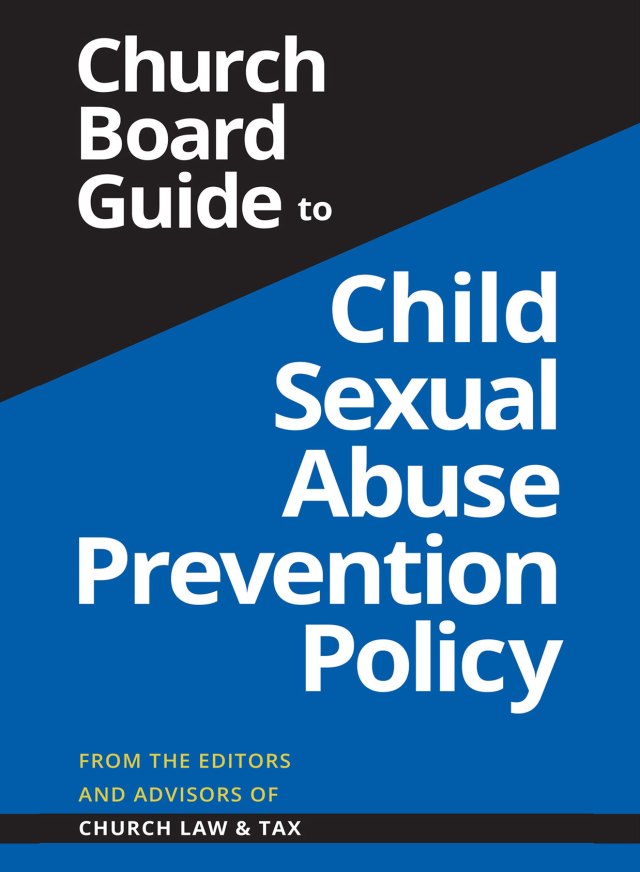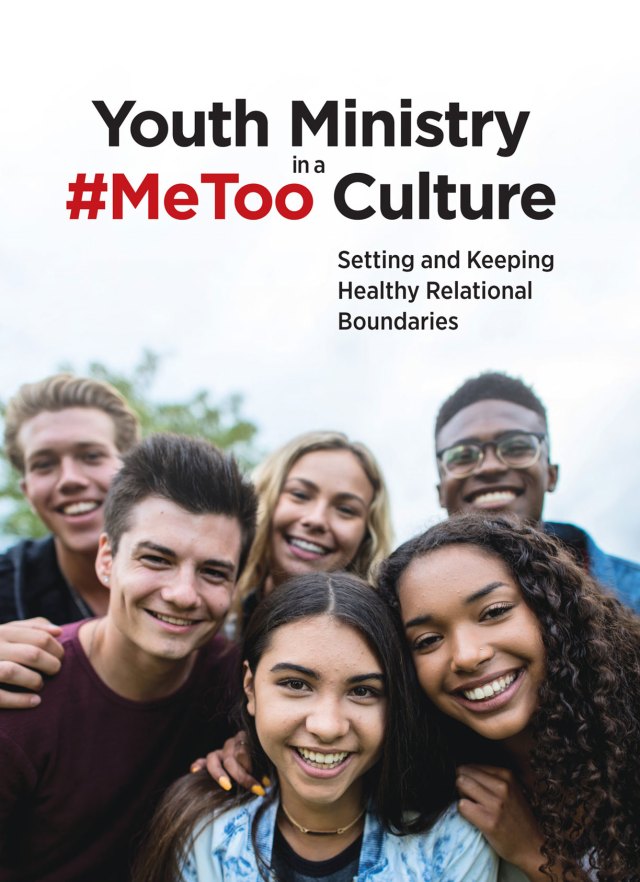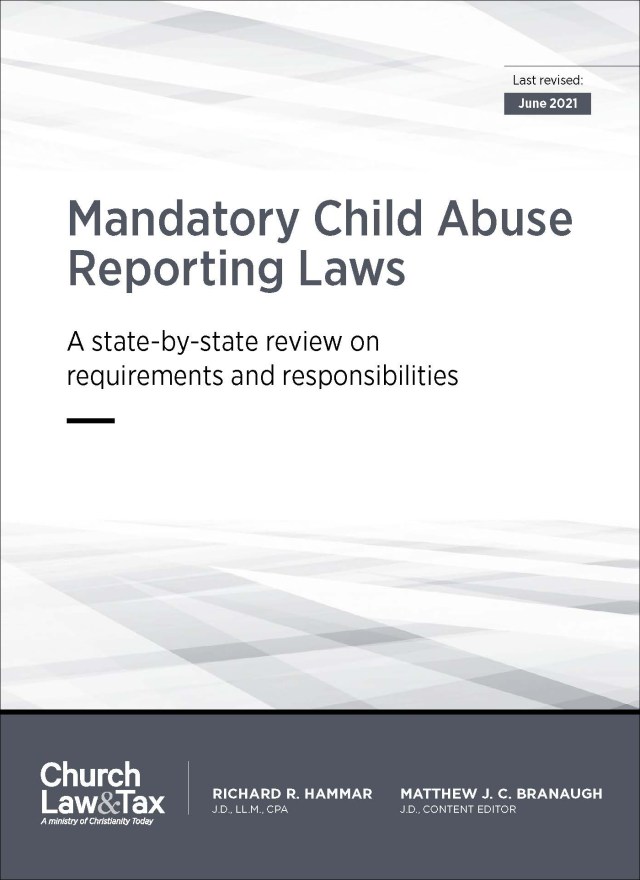Churches need to be aware of how children are being protected at church from sexual, mental, and physical abuse. To help in this effort, we’ve interviewed a group of leading experts on preventing sexual abuse at church. This is the second in the series. Other posts cover how to respond to reports of child abuse, the state of abuse prevention in the church, and common church leader blind spots.
Roundtable participants: Brian McAuliffe, CFO at Willow Creek Community Church in Illinois; Boz Tchividjian, law professor at Liberty University and executive director of GRACE; Peter Persuitti, managing director of Religious & Nonprofit Practice at Arthur J. Gallagher; and Frank Sommerville, lawyer and a shareholder in the law firm of Weycer, Kaplan, Pulaski & Zuber, P.C.Freelance Editor Ashley Emmert conducted this interview, with assistance from Assistant Editor Samuel Ogles.
Ashley: How can churches make sure that they are doing their due diligence when it comes to child safety? Is there any sort of sexual abuse prevention plan that both protects children and helps prevent lawsuits?
Brian: At Willow Creek, we do an application process to get all the information on a person. Then we run a background check and conduct interviews. The protection team will interview the person to see if there’s anything from his or her application that they want to dig deeper into. And then the ministry itself interviews individuals who are going to be involved with kids because they’re the ones who have the greatest exposure to them.
There are a couple of other things to consider:
First, you need to get the leadership involved and have all of this in the budget. It’s about getting the right systems in place.
Another thing is telling people to trust their intuition. You need volunteer training on this. We’ve had several instances where someone says, “Yeah, I thought he was kind of weird but I didn’t do anything about it.” And I think, Oh my goodness.
There should be training that helps volunteer leaders feel free to speak up if they have any kind of feeling that something just isn’t right. They need to know that they have full permission to seek more information or to ask different questions if they’re noticing that something feels off, because they are around kids all the time. They understand the kind of person they want there or don’t want there, and too many times, they just let things go. You need really good training on that.
Boz: One area that I think we don’t emphasize enough is training and equipping our kids. It’s our kids who are on the frontlines of observing behaviors. Many times our employees or even our volunteers are not going to be in the places and positions to observe behaviors that might be disturbing or cause at least a few red flags to be raised. And if we aren’t training and equipping the very ones who are there all the time—our kids—then we’re really doing them a disservice.
And the reality is that oftentimes grooming by offenders begins not in a large group, but perhaps with two friends talking to an adult and an adult asking the one for a phone number or just little things like that. The kids who haven’t been trained in any capacity are not going to think twice about that. But if we can equip them to know what behavior might not be normal and help refine their intuition then if they see something that they just aren’t comfortable with based upon the training they received, they will be encouraged to say something. Because if we only focus on our volunteers and employees, I think we’re missing out on opportunities where offenders most oftentimes strike.
Peter: Another emerging risk that both kids and volunteers need to be aware of is the possibility of peer-on-peer abuse. And I know all of you are familiar with it. But this is where our level of sophistication about sexual matters is changing and [the] internet is changing. We talk about screening, but some potential perpetrators are actually part of the youth group. People are maturing at difference paces and what we thought was a homogenous group of kids may actually have a perpetrator in the mix.
Frank: I think we need to do a better job of identifying potential victims and potential perpetrators. I think there needs to be a lot more study on that, but I think there are some patterns. It’s colloquial and not scientific, but I think that many times there are patterns out there that I see over and over again.
I ran across a study last year on men in prison for sexual assault of children that said 70 percent of their victims were between the ages of 12 and 15. That tells me that junior high and early high school is a high-risk period. We already know, having raised three daughters, that that’s an interesting period in which to be a parent. But this age appears to be a higher risk area.
The study also reported that most of those girls, over 90 percent of them, came from a family without a father or with an emotionally distant father. And so now once you get to know the families at your church, you can see that there may be some young ladies who are like walking billboards for a predator.
Yes, abuse can happen to anybody anywhere. That’s the definition of a lot of these accidents and negligence. Background checks are not going to solve it all. Training isn’t going to solve it all or prevent it all. But we can do something about the higher risk categories that are out there, and we can start identifying those more actively, and then we can start pouring more of our resources into those high-risk areas.
Peter: We have a lot more science and research-based information. We have more tools today than we did even ten years ago in research regarding this issue.
Boz: I tell churches, “Listen. Your job is not to determine whether or not this person you’re interviewing is a child molester. Your job is to try to determine whether or not this person is a good match for dealing with the children in the church.”
People are really uncomfortable with assessing someone’s character, and quite frankly, most of the time they’re going to be speculating. But if you can get a church to say that it’s going to be just like any other job interview, where you have to determine whether or not someone is a good fit for this job, then that’s the process of continued accountability. It allows churches to remove someone from working with children without concluding that he or she is a child molester, as well. Suddenly you can remove someone from this position because you don’t think it’s a good fit anymore. Or, quite frankly, you may end up, depending on the situation, telling someone you think they’re actually a risk to the children at your church.
Ashley: What would you say to churches that are struggling to have enough volunteers in their children’s ministry? Do they shut down children’s ministry if they don’t have the right volunteers?
Boz: There are two things that pretty much every church you’ll find in the country demonstrate: (1) they tend to be very trusting, and (2) they’re always in need.
Every church is going to be in need. And we have to recognize that difficult reality, but also recognize that offenders are drawn to those types of environments. And so I think what we say in those circumstances is yes. If we don’t have the right match for people in our church to serve with the youth, then we don’t compromise. And that means we’ve got to figure that out.
There aren’t many churches that don’t have the right match. It just may be that those people who are better matched haven’t stepped forward to say they want to serve in this capacity. Maybe we actually have to go after them and say, “Hey, we think you would do wonderful in this capacity. Could you help us out?”
Brian: I think, too, a lot of times people start these ministries and want to do everything because they see bigger churches doing it. And eventually they have to look at the volunteers they have and say, “This is the level we can do now. To go any further would put everybody at risk.”
Most churches want to do everything at the same time. They’ve got to shut that mentality down until they have the right people in place.
The other thing is you have to keep going back and making sure that you’re verifying that your protocols are actually being done. Churches have all these great things set up, and then they say, “Great, it’s done and everybody’s kosher and we’re doing this thing and it’s good.” And then no one ever checks up to make sure it’s being maintained, and being maintained correctly. So there has to be this mantra of going back and checking and rechecking, because [not checking that protocols are being followed is] just as dangerous as bringing in someone who’s the wrong person.
Ashley: How often would you recommend that the protocols are checked and maintained?
Brian: Depending on the size of the church and if volunteers or a staff member can do that, you’d want to do that at least once a quarter to make sure things are in place.
For training on preventing child abuse, see Reducing the Risk.





